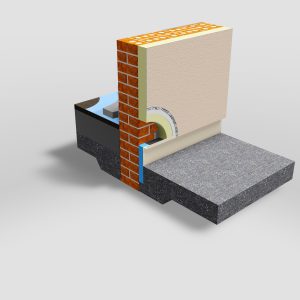The Bonfield Review
Like other insulation specialists that are committed to giving our customers the right solution, at Enviroform Solutions, we are looking forward to publication of the eagerly awaited Bonfield Review into energy efficiency.

Given the volume of existing homes dating back decades in Britain, it is a critical report. With many homes throughout the country clearly energy inefficient, there is an underlying associated issue that means that many people living with poor insulation suffer health consequences.
With all the post Brexit talk about NHS funding and claims about what savings can be made, it is astonishing that according to the National Energy Action, around £1bn is spent on illness that can be directly linked to cold, damp and poorly insulated homes.
It is clear that this isn’t just a building problem, and it is also clear that one of the big issues around home insulation is clear information and guidance for homeowners on solutions that are building specific and that work for their home.
Energy Efficient Insulation
The Bonfield Review is a critical watershed for the energy efficiency and renewable energy industry. The Review was commissioned to take particular account of poor quality installations, and compliance issues. It marked official recognition that the future of the industry must be sustainable and it is due to focus on three key area in the installation of energy efficiency and renewable energy measures in existing buildings.
The three primary areas of focus in the report are upon consumer advice and protection i.e. what supports customer in their decision making; a standards framework to consider measures to ensure the right product is installed in the right way; and finally monitoring and enforcement to set in place arrangements for audit and compliance checking.
External Wall Insulation Installed Properly
For homes suffering from poor insulation it isn’t necessarily a case of adding more insulation to parts of walls but getting the right thermal bridge free solution for a 100% of the wall. Adding extra wall insulation isn’t a simple solution. Liam Brown explains:
“Basically contractors are adding external wall insulation above the damp proof course and leaving the edge of the floors in the house exposed. So for example if there were 150mm of snow then this would sit under the EWI in direct contact with the floor and bypassing all the insulation that has been installed.
“The analogy would be your legs and body are warm but your feet are freezing. This can cause damp related problems due to condensation around corners and skirting.”
Thermo Trac

Enviroform’s patented Thermo-Trac provides a clear technical solution. Thermo Trac delivers the thermal and aesthetic benefits for all External Wall insulation systems to now insulate below the plinth and create a thermal bridge free solution that the client and homeowners deserve.
Liam Brown explained: “There are over 200,000 installs already completed under ECO / GreenDeal and very few if any are insulated below DPM / Plinth. This is a recipe for trouble and doesn’t solve the problem of damp homes.”
Thermo Trac is a prefinished insulated base rail with an integrated damp proof membrane layer used for eliminating cold bridging below the DPM zone.
Simply bedded into a specially designed waterproof mortar, it can be efficiently installed and levelled from both the vertical and horizontal plain.
As a superior weather proofed and pre finished solution it offers faster installation and eliminates the risk of onsite damage.
Critically by installing Thermo Trac, there is no break in the External Wall Insulation. And as a solution it is easy to install ahead of the main insulation works, without using any scaffolding. It offers increased internal surface temperature thereby eliminating the problem of temperature differences that cause the damp problem.
Liam concluded “The solid wall insulation supply chain industry needs to up its game with better information, and a priority on educating the homeowner. We need to see the right insulation being applied for each building and strive for thermal bridge free design. Currently that isn’t the case and we’re all paying the bill.”
